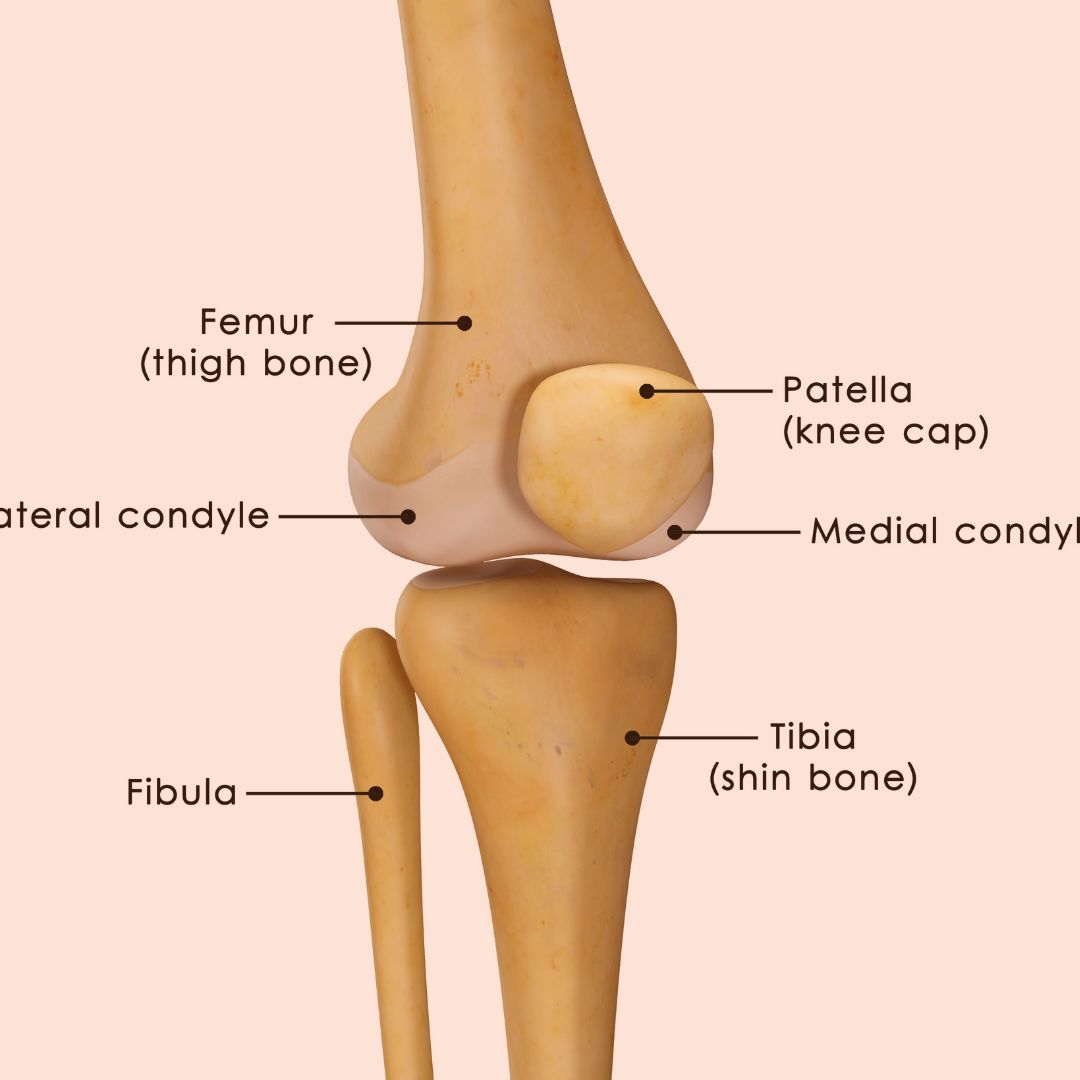Knee pain? 5 Common Knee injuries in Runners
Unfortunately, the most common injuries in recreational distant runners are to the knee. The problem is that the forces exerted on your body when running are probably far greater than you might think. Astonishingly, the force on your knee can be as much as 4.5 to 7.5 times your body weight. Poor balance and poor posture can increase the load to the knee and increase the risk of injury. This makes novice runners even more susceptible to knee problems.
Anatomy of the knee
Comprising bones, cartilage, ligaments and tendons, the knee is the largest joint in the body. It is formed at the point where the femur, tibia (shin bone), fibula and patella (kneecap) meet. The knee is made up of:
- articular cartilage that covers the ends of your femur and shin bone, thigh bone and the back of your kneecap (patella),
- four ligaments including your anterior cruciate ligament (ACL) and posterior cruciate ligament (PCL), which hold your bones together,
- two Menisci cartilage discs that act as “shock absorbers” and help to stabilise your knee,
- and the tendons that connect your muscles to your bone.
It is also a complex joint. Although primarily a hinge joint, it does allow a small amount of rotation and side to side movement in some positions. This complexity adds stability to the joint, but somewhat like an upmarket car, this also means there are more parts that can go wrong. Damage to the structures inside or outside the knee joint can result in fractures, dislocations, sprains, or tears.
1.Patella Femoral Syndrome (Runner’s knee)
The most common knee condition is called Patella Femoral Syndrome (PFS), and is so prevalent amongst runner’s that it is commonly referred to as Runner’s knee.
In PFS, the patella rubs against the inner or outer of the femur, rather than gliding straight down the middle. As a result, the patellofemoral joint become inflamed. If the condition progresses the articular cartilage of the patella soften and breaks down causing chronic pain and inflammation.
Symptoms: Typically, you experience a pain at the back of the kneecap. The pain is often more pronounced if you are running, walking upstairs, running uphill or bending the knee.
Cause: It happens when the kneecap is misaligned and rubs against the femur. This alignment issue is usually created by muscle imbalance around the knee. Tightness in the IT band can lead the kneecap to be pulled outward. Weak hip and thigh muscles can also add to the problem.
Prevention: As always, good quality running shoes will help minimise impact. Keeping your weight under control will help reduce the burden on your knee. Warming up thoroughly is essential. And increasing your running load in small incremental steps will help reduce the risk of runner’s knee. Release tension in quads using a foam roller regularly. And stretch your IT band!
Treatment: RICE protocol (rest, ice, compression, elevation). In addition, do some stretch and strengthening exercises for the quadriceps. Book a sports massage and use the foam roller daily on the quads. If necessary, use arch supports or orthotics in your running shoes.
2.Patella Tendonitis (Tendinopathy)
This less common knee injury is due to overuse and aging of your knees. It results from the patella tendon being overstressed, causing pain, stiffness and loss of strength in the knee.
3.ACL and PCL injuries
An ACL or PCL tear is caused by overstretching the knee’s ligament. It can occur when a runner stops suddenly, changes direction rapidly, whilst slowing down, landing incorrectly or has a direct collision. You sometimes hear or feel a pop in the knee, your knee may swell, feel unstable and become too painful to bear weight.
4.Kneecap Bursitis
Bursitis is an inflammation of your bursa (cushioning sacs between bones and soft tissues to reduce friction) in the front of your kneecap. Your bursa can become irritated and swell and then put pressure on your adjacent knee parts. It can be caused by repetitive friction on the area, muscle tightness, or from a sudden injury to the knee.
5.Medial Meniscus Tear
A meniscus tear is a tear to the cartilage in your knee joint causing pain on the inside of your knee. The most common cause is twisting of your knee when your foot is on the ground. It can also occur through direct impact in contact sports and in older athletes through gradual degeneration.
Treatment options for less common knee problems caused by running
Generally, rest, ice, exercise to strengthen and stretch your muscles, knee tape or brace, and getting better footwear are the best treatments recommended for knee injuries. However, treatment does depend on the knee problem and its severity. Your physiotherapist, Sports therapist, osteopath or doctor will be able to advise you on the best treatment.
Some knee pain conditions will need surgery. This may include fractures, ligament tears such as ACL tear, malalignment of the patella or, damage to the cartilage under your kneecap.
We hope this information is useful for you. If you need advice or have any questions about our treatments, please contact us. You can find us in Mill Hill Broadway and Islington. We are always happy to help. If you like this blog, please share!



